The climate in the taiga is cold, with average annual temperatures from +5 to -5 degrees. Rainfall varies from 20 cm to 200 cm per year. Of course, most of the precipitation is in the form of snow. Winters in the coniferous forest are cold and long; summers are relatively short and cool. In summer, when the snow begins to melt, the air temperature is low, so the moisture evaporates very little, which is why the land is very humid during the growing season. Add long daylight hours to the availability of water in the summer, and you will get ideal conditions for the active growth of all plants coniferous forest ... Yet the growth period remains short, about three months a year.
World distribution
The map shows in green boreal forests that stretch across North America and Eurasia. The boreal forest, also known as taiga, lies south of the tundra and north of deciduous forests and steppes. There is no corresponding forest zone in the Southern Hemisphere, probably because there is very little land in zones with a suitable climate. Cold temperatures in the Southern Hemisphere are mitigated by the proximity of the oceans; at the polar latitudes of the southern hemisphere, all lands are close to the ocean, in contrast to the vast tracts of land in the northern hemisphere. In addition, the oceans cycle in the southern hemisphere is not blocked by large tracts of land, as in the north.

Plant species
Many plant species are found in the taiga, but conifers are the dominant plant form. Snow easily rolls off these trees, and they keep the needles all winter. The needles themselves are well adapted, have a thick layer of resin and a small surface area to better tolerate cold and minimize water loss - a very important characteristic even in swampy taiga where water can be frozen most of the year. Together, these adaptive characteristics mean that even in cold conditions, if temperatures rise above freezing during the day, photosynthesis can occur. Broadleaf plants typically shed their foliage when cold weather sets in in the fall, and leaves will only regrow when the frost hazard has passed. This means that the growing season for broadleaf trees is much shorter than for conifers, and this advantage allows them to dominate the cold taiga climate.
Important conifers include fir, pine, spruce, hemlock and larch. All of these trees develop cones. The nuts remain in the buds until they crack and the seeds fall to the ground. Certain species of mammals and birds can also open buds in search of food. Some buds do not fall to the ground at all until a fire occurs, but since fire is not a determining factor in coniferous forests, there are very few of these buds.
In addition to conifers, mosses and lichens are important plants in the boreal forest. They are very important for the nutrition of many animals.
Types of animals
IN coniferous forest ecosystem many kinds of animals can be seen. Among the main predators of the boreal forest are a large number of felines and canines. Cats vary in size, from the Ussuri tiger to the lynx. Amur tigers are the only subspecies of large Asian cats that lives in the tropics of India and Indonesia, and up to the north of the coniferous forest of Russia.
Herbivores also vary in size, from large deer (such as elk) to tiny insects.
Among the smallest herbivorous mammals in the taiga are the arboreal porcupine and the small white hare. The snow hare, shown in the picture, is just beginning to prepare for winter; its brown skin, which protected it well in summer and autumn, begins to shed and change into white fur, which will help the hare hide well in winter.





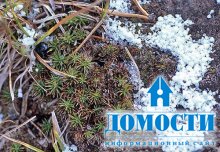

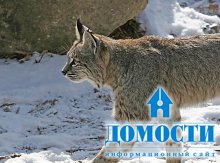
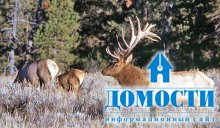


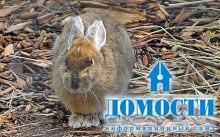
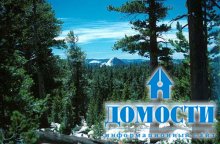


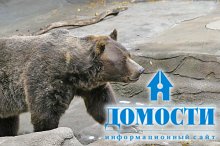
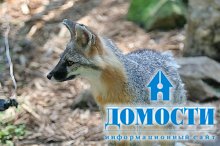
A biome is a type of habitat in a specific location: mountain peaks, deserts, rainforests, etc. It is determined by the climate of the place. Taiga Is a biome coniferous forests... Cold and lack of food make life in the taiga very difficult, especially in winter. Some animals of the taiga hibernate in winter, some fly south (if they can), while others adapt, although it is very difficult.
Taiga is Russian word meaning "forest", it is the largest biome on the planet. Taiga passes through Eurasia and North America. Taiga is located below the tundra biome. Winter in the taiga is very cold with heavy snowfalls. Summers are warm, rainy and humid. Many conifers grow in the taiga. Taiga is also called boreal forest.
Biogeocenosis of the coniferous forest
There are not as many plants and animals in the taiga as in tropical or deciduous forests. In summer, there are a lot of insects in the taiga.
There are very few plant species in the taiga, all because of the harsh climatic conditions... Not every plant can survive the extremely cold taiga winter. There are several types of mosses and lichens, but most of the plant life is represented by conifers such as pine, white spruce, Canadian tsuga and Douglas fir.
Conifers are also called evergreen trees. They have long, thin, resinous needles. The resin gives them some protection from frost and drying out. Evergreen trees do not shed their needles in the winter like deciduous trees do. This means they can start photosynthesis as soon as the weather gets warm. The dark color of the needles allows trees to absorb heat from the sun and start photosynthesis as early as possible.
Taiga evergreens are usually thin and grow close to each other. This gives them protection from cold and wind. Conifers tend to have branches that slope downward, allowing them to withstand the weight of the snow. On such branches, snow easily rolls down when it becomes too heavy. Taiga is very vulnerable to forest fires. The trees have adapted to this too - they have a thick bark.
Animals and Birds
The animals of the coniferous forest are mainly carnivores such as the lynx and representatives of the weasel family: minks and ermines. They prey on herbivores such as white hare, squirrel and vole. In some regions of the taiga, where more deciduous trees grow, there are marals, deer and elks.
Many insectivorous birds fly to the taiga in the summer. They fly away as soon as the nesting period ends. Seed-eating birds (finch and sparrow) and omnivorous birds (crows) live in the taiga all year round.
A forest can be compared to a multi-storey building, where each of the "floors" is formed by certain plants and animals. On each "floor" house, which has the name of a tier, the lighting is spacing, and therefore its inhabitants are also different.
The tallest trees will delight the upper tier of the forest. These are mainly oak, pine, spruce, hornbeam, maple, linden, ash, birch, wasps. Shrubs grow on the "floor" below - hazel, hawthorn, bird cherry, elderberry, blackthorn, wild rose, wolfberry and others.
Crowns of trees in the upper tiers of the forest and branches of shrubs obscure herbaceous plants from the sunlight. Therefore, there are usually few of them in the forest. Thick grass can only be seen in open clearings. Herbaceous plants form a separate layer of the forest. Forest herbaceous plants have predominantly wide leaves (lily of the valley, buttercup (rice. 56), periwinkle, ivy, wild strawberry, bracken, oxalis and others). This helps them absorb as much solar energy as possible under constant shading conditions. Early spring plants - snowdrops, scrub, corydalis, buttercup anemone - have time to germinate and bloom before foliage begins on the trees of the races. The lowest layer of the forest consists of mosses and lichens. (fig. 57).
The forest is inhabited by wild boar, bear, elk, deer, wolf, fox, squirrel, marten, roe deer, hare, hedgehog, forest mouse, viper, various birds and insects, earthworms and other animals. As you can see, the animal world of the forest is rich. (fig. 58) Therefore, the food chains are quite diverse here. Material from the site
Our state cares about the preservation and growth of forests and other natural ecosystems... For this, reserves are created. Reserved - means "protected by law." On the territory of the reserve, it is not allowed to hunt birds and animals to build houses, cut trees, plow lands, lay highways, etc. Most of all protected forests are in the Ukrainian Carpathians and the Crimean mountains.
On this page material on topics:
Forest animals briefly grade 3
Forest ecosystem animal world
Forest ecosystem report floors
Forest ecosystem message
Forest ecosystem post
Questions about this material:
Deciduous forest in Denmark

Broad-leaved forest. Armenia, Dilijan

Rainforest rainforest in Thailand
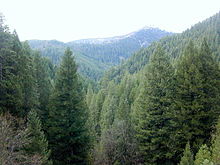
Coniferous forest in the Sierra Nevada mountains in northern California
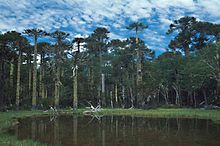
Temperate Valdive forests in southern Chile

Beech forest (Fagus sylvatica) with pronounced tiers
Forest- an ecological system in which the main life form is trees.
Forest is an integral part of nature, the concept of "forest" can be considered at different levels. On a global scale, it is a part of the biosphere; on a local scale, it can be a plantation. The forest can still be considered as a natural-zonal subdivision, as a provincial subdivision, as a forest area (Thorn forest, Shatilov forest, Black forest), as an ecosystem. Forests occupy about a third of the land area, the forest area is 38 million km². Of these, 264 million hectares, or 7%, are planted by humans, to early XXI century, man has destroyed about 50% of the forests that previously existed on the planet. Half of the forest area belongs to tropical forests. Areas occupied by trees with a crown density of less than 0.2-0.3 are considered sparse forests. According to UN FAO estimates, the forest area in Russia is 8.5 million km2 (851 million hectares), according to the Federal Forestry Agency, calculated using a different method, at the beginning of 2011, 797.1 of 1183.3 million hectares of forest land are covered forests.
Forest structure
Depending on the biological characteristics of the most important plants, their age and certain physical and geographical conditions, several tiers of plants develop in the forest. Tiers are quite clearly delimited horizons of concentration of active plant organs. Tiers can be formed by one or two or more types. In the forests, tiers are distinguished:
- Tree stand. Forest canopy- a set of crowns of closed trees. In the forests of the temperate zone there can be up to two forest canopies, in tropical forests - up to five tiers of the stand. In tropical rainforests, there is a layer of very tall trees that rise above the forest canopy.
- Undergrowth... Consists of shrubs and low trees.
- Herbal or herb-shrub.
- Mokhovoy or moss-lichen.
- Forest litter- “layer of organic residues on the soil surface in the forest” (TSB). It consists of fallen leaves, twigs, flowers, fruits, bark and other plant debris, faeces and animal corpses, pupae and larvae shells. It happens that in the forest litter there are several million inhabitants per square meter, from protozoa and bacteria to mice and other small mammals. Therefore, the litter is usually the most densely populated layer. The layer of dead plant remains is a dead cover. The role of forest litter is very important; it performs the following functions:
- Place of humus formation.
- Protection of soil from erosion and mechanical compaction.
- Regulator of the water-air regime of soils.
- Regulator of forest-growing properties of soils.
- Place of concentration of plant nutrients.
- Underground layer of the forest consists of the root system of plants, forest soils and their many inhabitants, including fauna, fungi and microorganisms.
Meets out-of-tier vegetation from climbing and climbing plants, and epiphytes.
The main component is the stand. Undergrowth and undergrowth, and in forests with a dense dense canopy and living ground cover, may be absent. Living ground cover includes existing mosses, lichens, herbaceous plants and shrubs.
Edge of the forest
Edge of the forest- a strip of transition to an adjacent type of vegetation. As a rule, trees at the edge of the forest are covered with leaves to their full height; there are more shrubs, lianas and undergrowth here. The edge differs from the neighboring types of vegetation in the species composition of plants and animals. Many species are found exclusively at the forest edge.
Deadwood

Deadwood in Belovezhskaya Pushcha
Deadwood- tree trunks or parts thereof that have fallen to the ground: twigs, branches, dry and rotting.
Fresh deadwood can be used as fuel.
Fresh deadwood, in the event of a forest fire, contributes to its rapid spread. In addition, deadwood allows insects to multiply, especially bark beetles, and the development of fungal diseases that can spread to living trees. Therefore, fresh deadwood is removed from the forest as much as possible in the required quantities. The decomposed dead wood becomes harmless, and then its removal from the forest no longer brings benefits, but damage, in vain depriving the forest soil of natural fertilizer.
Deadwood strengthens the slopes and protects the soil. It is a permanent or temporary home for many inhabitants: microorganisms, fungi, arthropods, molluscs, amphibians and reptiles, birds and even small mammals. For the successful development of plants of some species, it is necessary that their seeds germinate in the dead wood.
Deadwood plays a significant role as a long-term carbon reservoir. For example, in coniferous forests, deadwood along with the soil can contain up to 25-30% of the carbon stored in the forest.
Forest as an ecosystem
A forest is not just a collection of trees and shrubs, a forest is an ecosystem - a complex community of closely related elements, this includes both living organisms (biota) and inanimate, abiotic component - air, soil and water. Forest biota includes vegetation, animals and microorganisms, and forest vegetation is not only woody vegetation, but also grasses, mosses, fungi, algae and lichens. Streams of energy and substances (for example, oxygen) circulate in the ecosystem, forming a cycle and connecting all the elements of living and inanimate nature... An example is the processes associated with photosynthesis - the process of making nutrients from water and carbon dioxide using the energy of sunlight. Only green plants have the ability to photosynthesize, so everyone else is forced to eat either these plants or other organisms that use plants for food, and thus plants, directly or indirectly, are the source of nutrition for all organisms. The role of bacteria and other organisms that decompose metabolic waste and plant and animal residues is very important, forming more simple substances that can be used in further metabolism.
Plantings
Planting(forest phytocenosis) - a homogeneous area of the forest, differing from the neighboring ones in the nature of vegetation, the main component is the stand. They can differ in origin, composition, age, degree of closeness or shape.
What matters most is the difference between high-bore and low-bore plantings. High-stemmed trees are formed by trees that have grown from seeds, and low-stemmed ones - descended from overgrowth. The same plantation may contain trees of different origins. Coniferous stands are usually of seed origin, while natural plantations of deciduous species are of mixed origin.
Plantings are distinguished by composition clean, from trees of the same tree species, and mixed- from trees of two or more different species. Plantations of natural origin are usually mixed. Clean stands are found only on soils suitable for the growth of any one tree species, for example, clean pine plantations on dry sandy soils, black alder plantations in bogs.
The ratio of age groups (young, middle-aged, ripe, overmature) determines age structure forest phytocenosis. Age classes they are distinguished depending on individual species (beech, Caucasian fir, poplar), groups of species (coniferous, hard-leaved, soft-leaved), and also on whether the plantation is seed or coppice. The age of all trees forming a plantation can be the same ( coeval planting) or different ( uneven age planting). In natural forests, stands of the same age rarely appear (for example, after a strong fire); as a rule, their occurrence is associated with human economic activity.
If a plantation grows in one place for a long time without changing the composition of tree species, then they are indigenous. Derivatives, or secondary, grow in the place of indigenous forests that have died due to natural disasters - fires, hurricanes, extreme frosts, prolonged droughts, infectious diseases of trees or insect infestations, as well as forests cut down by man.
By origin, plantings can be natural or artificial... A special place among artificial plantations is occupied by protective forest plantations- artificial plantations for protection from adverse natural factors, including to combat drought, water and wind erosion. Among other things, protective forest plantations have a beneficial effect on the microclimate, snow distribution, and the hydrological regime of the soil. They are arranged by planting or sowing, mainly in steppe, forest-steppe and semi-desert regions. They can serve to protect many objects, including agricultural land, soil, water bodies, roads, and settlements.
Closeness degree
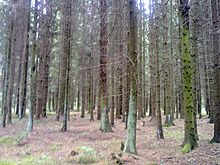
Same-age clean plantation (Norway spruce). In places with a broken canopy closure, grassy vegetation is noticeable on the litter.
The degree of closeness of the plantation (the degree of shading of the soil under it) is a circumstance of tremendous importance: on the soil shaded by the canopy of the plantation, the accumulation of forest litter occurs, thanks to which soil fertility is maintained. With a violation of closeness, the sun's rays penetrate to the soil, which makes the litter decompose faster, herbaceous vegetation appears, the soil becomes compacted, and all this adversely affects the growth of trees. Until a certain age, plantations of the same age remain closed, then natural thinning begins. From a young age, there is a struggle between the trees forming the plantation over the space required for the gradually expanding peaks; many trees turn out to be backward during this struggle and die as a result. Thus, the struggle between trees determines the natural loss of trunks in the stand, which is especially pronounced in young and middle-aged stands. Trees that die off at a young age have small tops, the dying off of which causes the formation of insignificant gaps, which quickly close due to the growth of the tops of the remaining trees. At a higher age, large trees die off, the tops of which took up so much space that the resulting gaps cannot be closed by the tops of the remaining trees, which, moreover, grow rather slowly due to old age. Thus, at a certain age, higher for shade-tolerant species, for example, spruce, fir, beech, hornbeam, and younger for light-loving ones, for example, pine, oak, birch, gaps begin to appear in the plantings that cannot close and break the closeness.
Economic appraisal
Determination of quantitative parameters of forests, for example, timber reserves, height and quality of trees and forest stands is engaged in dendrometry, or forest inventory... This is necessary both for the commercial assessment of forests, and for the study of their development and assessment of the effectiveness of their use and cultivation.
- Forest Bonitet- an indicator of the productivity of the plantation (the rate of growth of wood). The growth rate of trees depends on soil and soil, climatic conditions and human impact on the forest. Bonitet depends on the average height of the trees of the main species, taking into account their age. For all tree species, a grading scale is used, compiled in 1911 by Professor M.M. Orlov. Seed and undergrowth plantations have special scales.
Spreading
In all those places where sustainable growth of trees is possible, a forest grows. The main factor affecting the possibility of forest growth is the amount of precipitation, which should be at least 200 mm per year. Other factors, for example, the amount of heat, the composition of the soil, affect mainly the species composition. A forest boundary is a complex transition (ecotone) between two fundamentally different classes of ecosystems - forest and treeless. Forests grow only up to a certain height of the area above sea level and its geographical latitude.
Within the zone of forest growth, there are treeless areas where the forest cannot grow either because of a fire hazard, or the environment is severely deteriorated under the influence of natural or anthropogenic causes. The areas without forests due to frequent fires range from several hectares to thousands of square kilometers. For example, much of the North American prairie is assumed to be treeless for this very reason.
Shrubs, herbaceous plants, and even lichens and mosses can impede reforestation and possibly displace them. Thickets of shrubs, and sometimes even cereals or other grasses such as goldenrod or asters, can prevent many tree species from settling. Because of this, some areas remain treeless for over 30 years. Experiments have shown that many plants secrete substances that inhibit the germination of tree seeds (inhibitors).
Reforestation in clearings, burnt-out areas and abandoned agricultural lands can be hampered by some animals, for example, rabbits in; in the past, bison on the prairies of the Midwest; even small mammals, such as mice, can eat seeds and nibble on tree seedlings.
Forest distribution
By regions of the world (thousand km²)
| Regions | 1990 | 2000 | 2010 | 2000 to 1990 | 2010 to 2000 | 2000 to 1990 | 2010 to 2000 |
|---|---|---|---|---|---|---|---|
| East africa | 888 650 | 810 270 | 731 970 | −78 380 | −78 300 | −9,67% | −10,70% |
| West Africa | 915 890 | 819 790 | 732 340 | −96 100 | −87 450 | −11,72% | −11,94% |
| North Africa | 851 230 | 792 240 | 788 140 | −58 990 | −4 100 | −7,45% | −0,52% |
| Central Africa | 2 682 140 | 2 614 550 | 2 548 540 | −67 590 | −66 010 | −2,59% | −2,59% |
| South Africa | 2 154 470 | 2 048 790 | 1 943 200 | −105 680 | −105 590 | −5,16% | −5,43% |
| Africa | 7 492 380 | 7 085 640 | 6 744 190 | −406 740 | −341 450 | −5,74% | −5,06% |
| East Asia | 2 091 980 | 2 268 150 | 2 546 260 | 176 170 | 278 110 | 7,77% | 10,92% |
| Western asia | 255 880 | 262 260 | 274 980 | 6 380 | 12 720 | 2,43% | 4,63% |
| central Asia | 159 010 | 159 800 | 160 160 | 790 | 360 | 0,49% | 0,22% |
| Southeast Asia | 2 472 600 | 2 230 450 | 2 140 640 | −242 150 | −89 810 | −10,86% | −4,20% |
| South Asia | 781 630 | 780 980 | 803 090 | −650 | 22 110 | −0,08% | 2,75% |
| Asia | 5 761 100 | 5 701 640 | 5 925 130 | −59 460 | 223 490 | −1,04% | 3,77% |
| the Russian Federation | 8 089 500 | 8 092 690 | 8 090 900 | 319 | −179 | 0,04% | −0,02% |
| Europe (without RF) | 1 805 210 | 1 889 710 | 1 959 110 | 84 500 | 69 400 | 4,47% | 3,54% |
| Europe | 9 894 710 | 9 982 400 | 10 050 010 | 87 690 | 67 610 | 0,88% | 0,67% |
| Canada | 3 101 380 | 3 100 330 | 3 099 820 | −1 050 | −510 | −0,03% | −0,02% |
| Caribbean | 59 010 | 64 330 | 69 320 | 5 320 | 4 990 | 8,27% | 7,20% |
| Mexico | 702 910 | 667 510 | 648 020 | −35 400 | −19 490 | −5,30% | −3,01% |
| USA | 2 963 350 | 3 001 950 | 3 040 220 | 38 600 | 38 270 | 1,29% | 1,26% |
| Central America | 257 170 | 219 800 | 194 990 | −37 370 | −24 810 | −17,00% | −12,72% |
| North America | 7 083 820 | 7 053 920 | 7 052 370 | −29 900 | −1 550 | −0,42% | −0,02% |
| South America | 9 464 540 | 9 043 220 | 8 643 510 | −421 320 | −399 710 | −4,66% | −4,62% |
| Oceania | 1 987 440 | 1 983 810 | 1 913 840 | −3 630 | −69 970 | −0,18% | −3,66% |
| PEACE | 41 683 990 | 40 850 630 | 40 329 050 | −833 360 | −521 580 | −2,04% | −1,29% |
And yet, humans have the greatest impact on forests.
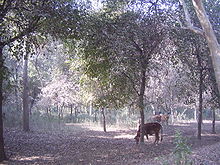
Forest in Punjab, India
The richest countries in the forest:
- - 809 million hectares
- - 520
- - 310
- - 304
- China - 207
- Democratic Republic of the Congo - 154
- - 149
- others - 1347 million hectares.
Distribution of forests in countries and territories of the world
| Country | 1990 | 2000 | 2005 | 2010 | 2010 |
|---|---|---|---|---|---|
| Australia | 20,1 | 20,2 | 20,0 | 19,4 | −0,7 |
| Austria | 45,8 | 46,5 | 46,8 | 47,1 | 1,3 |
| Azerbaijan | 11,3 | 11,3 | 11,3 | 11,3 | 0,0 |
| Albania | 28,8 | 28,1 | 28,5 | 28,3 | −0,5 |
| Algeria | 0,7 | 0,7 | 0,6 | 0,6 | −0,1 |
| Anguilla (UK) | 60,0 | 60,0 | 60,0 | 60,0 | 0,0 |
| Angola | 48,9 | 47,9 | 47,4 | 46,9 | −2,0 |
| Andorra | 35,6 | 35,6 | 35,6 | 35,6 | 0,0 |
| Antigua and Barbuda | 22,7 | 22,7 | 22,2 | 22,2 | −0,5 |
| Argentina | 12,7 | 11,6 | 11,2 | 10,7 | −2,0 |
| Armenia | 12,3 | 10,8 | 10,0 | 9,3 | −3,0 |
| Aruba (Netherlands) | 0,0 | 0,0 | 0,0 | 0,0 | 0,0 |
| Afghanistan | 2,1 | 2,1 | 2,1 | 2,1 | 0,0 |
| Bahamas | 51,4 | 51,4 | 51,4 | 51,4 | 0,0 |
| Bangladesh | 11,5 | 11,3 | 11,2 | 11,1 | −0,4 |
| Barbados | 18,6 | 18,6 | 18,6 | 18,6 | 0,0 |
| Bahrain | 0,0 | 0,0 | 0,0 | 1,4 | 1,4 |
| Belarus | 37,5 | 39,9 | 40,7 | 41,6 | 4,1 |
| Belize | 69,6 | 65,3 | 63,2 | 61,1 | −8,5 |
| Belgium | 22,4 | 22,0 | 22,2 | 22,4 | 0,0 |
| Benin | 52,1 | 45,8 | 43,5 | 41,2 | −10,9 |
| Bermuda (UK) | 20,0 | 20,0 | 20,0 | 20,0 | 0,0 |
| Bulgaria | 30,1 | 30,5 | 33,6 | 36,1 | 6,0 |
| Bolivia | 57,9 | 55,4 | 54,2 | 52,7 | −5,2 |
| Bosnia and Herzegovina | 43,2 | 42,7 | 42,7 | 42,7 | −0,5 |
| Botswana | 24,2 | 22,1 | 21,1 | 20,0 | −4,2 |
| Brazil | 69,0 | 65,6 | 63,7 | 62,4 | −6,6 |
| Brunei Darussalam | 78,4 | 75,3 | 73,8 | 72,1 | −6,3 |
| Burkina Faso | 25,0 | 22,8 | 21,7 | 20,6 | −4,4 |
| Burundi | 11,3 | 7,7 | 7,0 | 6,7 | −4,6 |
| Butane | 64,6 | 66,8 | 68,0 | 69,1 | 4,5 |
| Vanuatu | 36,1 | 36,1 | 36,1 | 36,1 | 0,0 |
| Great Britain | 10,8 | 11,5 | 11,7 | 11,9 | 1,1 |
| Hungary | 20,0 | 21,3 | 22,1 | 22,6 | 2,6 |
| Venezuela | 59,0 | 55,7 | 54,1 | 52,5 | −6,5 |
| Virgin Islands (UK) | 25,0 | 25,0 | 25,0 | 25,0 | 0,0 |
| Virgin Islands (US) | 68,6 | 62,9 | 60,0 | 58,8 | −9,8 |
| East Timor | 65,0 | 57,4 | 53,7 | 49,9 | −15,1 |
| Vietnam | 30,2 | 37,8 | 42,2 | 44,5 | 14,3 |
| Gabon | 85,4 | 85,4 | 85,4 | 85,4 | 0,0 |
| Guyana | 77,2 | 77,2 | 77,2 | 77,2 | 0,0 |
| Haiti | 4,2 | 4,0 | 3,8 | 3,7 | −0,5 |
| Gambia | 44,2 | 46,1 | 47,1 | 48,0 | 3,8 |
| Ghana | 32,7 | 26,8 | 24,2 | 21,7 | −11,0 |
| Guadeloupe | 41,9 | 40,6 | 40,0 | 39,8 | −2,1 |
| Guatemala | 43,8 | 38,8 | 36,3 | 33,7 | −10,1 |
| Guiana (France) | 99,2 | 98,8 | 98,5 | 98,3 | −0,9 |
| Guinea | 29,6 | 28,1 | 27,4 | 26,6 | −3,0 |
| Guinea-Bissau | 78,8 | 75,4 | 73,7 | 71,9 | −6,9 |
| Germany | 30,8 | 31,8 | 31,8 | 31,8 | 1,0 |
| Gibraltar (UK) | 0,0 | 0,0 | 0,0 | 0,0 | 0,0 |
| Honduras | 72,7 | 57,1 | 51,8 | 46,4 | −26,3 |
| Grenada | 50,0 | 50,0 | 50,0 | 50,0 | 0,0 |
| Greenland (Denmark) | 0,0 | 0,0 | 0,0 | 0,0 | 0,0 |
| Greece | 25,6 | 27,9 | 29,1 | 30,3 | 4,7 |
| Georgia | 40,0 | 39,8 | 39,6 | 39,5 | −0,5 |
| Guam (USA) | 47,3 | 47,3 | 47,3 | 47,3 | 0,0 |
| Denmark | 10,5 | 11,5 | 12,6 | 12,8 | 2,3 |
| Democratic Republic of the Congo | 70,7 | 69,4 | 68,7 | 68,0 | −2,7 |
| Djibouti | 0,3 | 0,3 | 0,3 | 0,3 | 0,0 |
| Dominica | 66,7 | 63,5 | 61,3 | 60,0 | −6,7 |
| Dominican Republic | 40,8 | 40,8 | 40,8 | 40,8 | 0,0 |
| Egypt | 0,0 | 0,1 | 0,1 | 0,1 | 0,1 |
| Zambia | 71,0 | 68,8 | 67,7 | 66,5 | −4,5 |
| West Sahara | 2,7 | 2,7 | 2,7 | 2,7 | 0,0 |
| Zimbabwe | 57,3 | 48,8 | 44,6 | 40,4 | −16,9 |
| Yemen | 1,0 | 1,0 | 1,0 | 1,0 | 0,0 |
| Israel | 6,1 | 7,1 | 7,2 | 7,1 | 1,0 |
| India | 21,5 | 22,0 | 22,8 | 23,0 | 1,5 |
| Indonesia | 65,4 | 54,9 | 54,0 | 52,1 | −13,3 |
| Jordan | 1,1 | 1,1 | 1,1 | 1,1 | 0,0 |
| Iraq | 1,8 | 1,9 | 1,9 | 1,9 | 0,1 |
| Iran | 6,8 | 6,8 | 6,8 | 6,8 | 0,0 |
| Ireland | 6,7 | 9,2 | 10,1 | 10,7 | 4,0 |
| Iceland | 0,1 | 0.2 | 0.2 | 0,3 | 0,2 |
| Spain | 27,7 | 34,0 | 34,6 | 36,4 | 8,7 |
| Italy | 25,8 | 28,5 | 29,8 | 31,1 | 5,3 |
| Cape Verde | 14,4 | 20,3 | 20,8 | 21,1 | 6,7 |
| Kazakhstan | 1,3 | 1,2 | 1,2 | 1,2 | −0,1 |
| Cayman Islands (UK) | 50,0 | 50,0 | 50,0 | 50,0 | 0,0 |
| Cambodia | 73,3 | 65,4 | 60,8 | 57,2 | −16,1 |
| Cameroon | 51,4 | 46,8 | 44,5 | 42,1 | −9,3 |
| Canada | 34,1 | 34,1 | 34,1 | 34,1 | 0,0 |
| Qatar | 0,0 | 0,0 | 0,0 | 0,0 | 0,0 |
| Kenya | 6,5 | 6,3 | 6,2 | 6,1 | −0,4 |
| Cyprus | 17,4 | 18,6 | 18,7 | 18,7 | 1,3 |
| Kyrgyzstan | 4,4 | 4,5 | 4,5 | 5,0 | 0,6 |
| Kiribati | 14,8 | 14,8 | 14,8 | 14,8 | 0,0 |
| China | 16,7 | 18,8 | 20,5 | 21,9 | 5,2 |
| Colombia | 56,3 | 55,4 | 55,0 | 54,5 | −1,8 |
| Comoros | 6,5 | 4,3 | 2,7 | 1,6 | −4,9 |
| Congo | 66,5 | 66,0 | 65,8 | 65,6 | −0,9 |
| Korean folk Democratic Republic |
68,1 | 57,6 | 52,3 | 47,1 | −21,0 |
| Costa Rica | 50,2 | 46,5 | 48,8 | 51,0 | 0,8 |
| Ivory Coast | 32,1 | 32,5 | 32,7 | 32,7 | 0,6 |
| Cuba | 18,7 | 22,2 | 24,6 | 26,1 | 7,4 |
| Kuwait | 0,2 | 0,3 | 0,3 | 0,3 | 0,1 |
| Laos | 75,0 | 71,6 | 69,9 | 68,2 | −6,8 |
| Latvia | 51,1 | 52,2 | 52,9 | 53,8 | 2,7 |
| Lesotho | 1,3 | 1,4 | 1,4 | 1,4 | 0,1 |
| Liberia | 51,2 | 48,1 | 46,5 | 44,9 | −6,3 |
| Lebanon | 12,8 | 12,8 | 13,3 | 13,4 | 0,6 |
| Libya | 0,1 | 0,1 | 0,1 | 0,1 | 0,0 |
| Lithuania | 31,0 | 32,2 | 33,8 | 34,5 | 3,5 |
| Liechtenstein | 40,0 | 43,8 | 43,8 | 43,8 | 3,8 |
| Luxembourg | 33,2 | 33,6 | 33,6 | 33,6 | 0,4 |
| Mauritius | 19,2 | 19,2 | 17,2 | 17,2 | −2,0 |
| Mauritania | 0,4 | 0,3 | 0,3 | 0,2 | −0,2 |
| Madagascar | 23,5 | 22,6 | 22,1 | 21,6 | −1,9 |
| Mayotte (France) | 48,6 | 43,2 | 40,5 | 37,8 | −10,8 |
| Macedonia | 35,9 | 37,7 | 38,3 | 39,2 | 3,3 |
| Malawi | 41,4 | 37,9 | 36,2 | 34,4 | −7,0 |
| Malaysia | 68,1 | 65,7 | 63,6 | 62,3 | −5,8 |
| Mali | 11,5 | 10,9 | 10,6 | 10,2 | −1,3 |
| Maldives | 3,3 | 3,3 | 3,3 | 3,3 | 0,0 |
| Malta | 1,0 | 1,0 | 1,0 | 1,0 | 0,0 |
| Morocco | 11,3 | 11,2 | 11,4 | 11,5 | 0,2 |
| Martinique (France) | 45,7 | 45,7 | 45,7 | 45,7 | 0,0 |
| Marshall Islands | 72,2 | 72,2 | 72,2 | 72,2 | 0,0 |
| Mexico | 36,2 | 34,3 | 33,7 | 33,3 | −2,9 |
| Mozambique | 55,2 | 52,4 | 51,0 | 49,6 | −5,6 |
| Moldova | 9,7 | 9,9 | 11,0 | 11,7 | 2,0 |
| Monaco | 0,0 | ||||
| Mongolia | 8,0 | 7,5 | 7,2 | 7,0 | −1,0 |
| Montserrat (UK) | 36,4 | 20,0 | 20,0 | 20,0 | −16,4 |
| Myanmar | 59,6 | 53,0 | 50,7 | 48,3 | −11,3 |
| Namibia | 10,6 | 9,8 | 9,3 | 8,9 | −1,7 |
| Nauru | 0,0 | 0,0 | 0,0 | 0,0 | 0,0 |
| Nepal | 33,7 | 27,3 | 25,4 | 25,4 | −8,3 |
| Niger | 1,5 | 1,0 | 1,0 | 1,0 | −0,5 |
| Nigeria | 18,9 | 14,4 | 12,2 | 9,9 | −9,0 |
| Dutch Antilles |
1,3 | 1,3 | 1,3 | 1,3 | 0,0 |
| Netherlands | 10,2 | 10,6 | 10,8 | 10,8 | 0,6 |
| Nicaragua | 37,2 | 31,4 | 28,5 | 25,7 | −11,5 |
| Niue (New Zealand) | 80,8 | 76,9 | 73,1 | 73,1 | −7,7 |
| New Zealand | 28,8 | 30,9 | 31,0 | 30,9 | 2,1 |
| New Caledonia (France) | 45,9 | 45,9 | 45,9 | 45,9 | 0,0 |
| Norway | 30,0 | 30,6 | 31,8 | 33,1 | 3,1 |
| United Arab Emirates | 2,9 | 3,7 | 3,7 | 3,8 | 0,9 |
| Oman | 0,0 | 0,0 | 0,0 | 0,0 | 0,0 |
| Guernsey Island (UK) | 3,0 | ||||
| Jersey (UK) | 5,0 | ||||
| Isle of Man (UK) | 6,0 | ||||
| Saint Helena (UK) | 6,5 | 6,5 | 6,5 | 6,5 | 0,0 |
| Cook Islands (New Zealand) | 62,5 | 66,7 | 66,7 | 66,7 | 4,2 |
| Pakistan | 3,3 | 2,7 | 2,5 | 2,2 | −1,1 |
| Palau | 82,6 | 87,0 | 87,0 | 87,0 | 4,4 |
| Palestine | 1,5 | 1,5 | 1,5 | 1,5 | 0,0 |
| Panama | 50,9 | 45,3 | 44,5 | 43,7 | −7,2 |
| Papua New Guinea | 69,6 | 66,5 | 65,0 | 63,4 | −6,2 |
| Paraguay | 53,3 | 48,7 | 46,5 | 44,3 | −9,0 |
| Peru | 54,8 | 54,1 | 53,7 | 53,1 | −1,7 |
| Polynesia (France) | 15,0 | 28,7 | 35,5 | 42,3 | 27,3 |
| Poland | 29,2 | 29,8 | 30,0 | 30,5 | 1,3 |
| Portugal | 36,3 | 37,6 | 37,9 | 38,1 | 1,8 |
| Puerto Rico (USA) | 32,4 | 52,3 | 57,3 | 62,2 | 29,8 |
| Renyon (France) | 34,8 | 34,8 | 34,0 | 35,2 | 0,4 |
| The Republic of Korea | 64,5 | 63,7 | 63,4 | 63,0 | −1,5 |
| the Russian Federation | 49,4 | 49,4 | 49,4 | 49,4 | 0,0 |
| Rwanda | 12,9 | 13,9 | 15,6 | 17,6 | 4,7 |
| Romania | 27,7 | 27,7 | 27,8 | 28,6 | 0,9 |
| Salvador | 18,2 | 16,0 | 14,9 | 13,9 | −4,3 |
| Samoa | 45,9 | 60,4 | 60,4 | 60,4 | 14,5 |
| Samoa (USA) | 90,0 | 90,0 | 90,0 | 90,0 | 0,0 |
| San marino | 0,0 | 0,0 | 0,0 | 0,0 | 0,0 |
| Sao Tome and Principe | 28,1 | 28,1 | 28,1 | 28,1 | 0,0 |
| Saudi Arabia | 0,5 | 0,5 | 0,5 | 0,5 | 0,0 |
| Swaziland | 27,4 | 30,1 | 31,5 | 32,7 | 5,3 |
| Northern Mariana Islands | 73,9 | 69,6 | 67,4 | 65,2 | −8,7 |
| Seychelles | 89,1 | 89,1 | 89,1 | 89,1 | 0,0 |
| Senegal | 48,6 | 46,2 | 45,0 | 44,0 | −4,6 |
| Saint Pierre and Miquelon (France) | 13,0 | 13,0 | 13,0 | 13,0 | 0,0 |
| Saint Vincent and the Grenadines | 64,1 | 66,7 | 66,7 | 69,2 | 5,1 |
| Saint Kitts and Nevis | 42,3 | 42,3 | 42,3 | 42,3 | 0,0 |
| Saint Lucia | 72,1 | 77,0 | 77,0 | 77,0 | 4,9 |
| Serbia | 26,4 | 28,1 | 28,3 | 31,0 | 4,6 |
| Singapore | 2,9 | 2,9 | 2,9 | 2,9 | 0,0 |
| Syria | 2,0 | 2,4 | 2,5 | 2,7 | 0,7 |
| Slovakia | 40,0 | 39,9 | 40,2 | 40,2 | 0,2 |
| Slovenia | 59,0 | 61,2 | 61,7 | 62,2 | 3,2 |
| USA | 32,3 | 32,8 | 33,0 | 33,2 | 0,9 |
| Solomon islands | 83,0 | 81,0 | 80,1 | 79,1 | −3,9 |
| Somalia | 13,2 | 12,0 | 11,4 | 10,8 | −2,4 |
| Sudan | 32,1 | 29,7 | 29,6 | 29,4 | −2,7 |
| Suriname | 94,7 | 94,7 | 94,7 | 94,6 | −0,1 |
| Sierra leone | 43,5 | 40,8 | 39,4 | 38,1 | −5,4 |
| Tajikistan | 2,9 | 2,9 | 2,9 | 2,9 | 0,0 |
| Thailand | 38,3 | 37,2 | 37,0 | 37,1 | −1,2 |
| Tanzania | 46,8 | 42,3 | 40,0 | 37,7 | −9,1 |
| Turks and Caicos Islands (UK) | 79,1 | 79,1 | 79,1 | 79,1 | 0,0 |
| Togo | 12,6 | 8,9 | 7,1 | 5,3 | −7,3 |
| Tokelau (New Zealand) | 0,0 | 0,0 | 0,0 | 0,0 | 0,0 |
| Tonga | 12,5 | 12,5 | 12,5 | 12,5 | 0,0 |
| Trinidad and Tobago | 47,0 | 45,6 | 44,8 | 44,1 | −2,9 |
| Tuvalu | 33,3 | 33,3 | 33,3 | 33,3 | 0,0 |
| Tunisia | 4,1 | 5,4 | 5,9 | 6,5 | 2,4 |
| Turkmenistan | 8,8 | 8,8 | 8,8 | 8,8 | 0,0 |
| Turkey | 12,6 | 13,2 | 14,0 | 14,7 | 2,1 |
| Uganda | 24,1 | 19,6 | 17,4 | 15,2 | −8,9 |
| Uzbekistan | 7,2 | 7,6 | 7,7 | 7,7 | 0,5 |
| Ukraine | 16,0 | 16,4 | 16,5 | 16,8 | 0,8 |
| Wallis and Futuna (France) | 42,9 | 42,9 | 42,9 | 40,0 | −2,9 |
| Uruguay | 5,3 | 8,1 | 8,7 | 10,0 | 4,7 |
| Faroe Islands (Denmark) | 0,0 | 0,0 | 0,0 | 0,0 | 0,0 |
| Federated States of Micronesia | 91,4 | 91,4 | 91,4 | 91,4 | 0,0 |
| Fiji | 52,2 | 53,7 | 54,6 | 55,5 | 3,3 |
| Philippines | 22,0 | 23,9 | 24,8 | 25,7 | 3,7 |
| Finland | 72,0 | 73,9 | 72,9 | 72,9 | 0,9 |
| Falkland Islands (UK) | 0,0 | 0,0 | 0,0 | 0,0 | 0,0 |
| France | 26,4 | 27,9 | 28,6 | 29,0 | 2,6 |
| Croatia | 33,1 | 33,7 | 34,0 | 34,3 | 1,2 |
| Central African Republic | 37,2 | 36,8 | 36,5 | 36,3 | −0,9 |
| Chad | 10,4 | 9,8 | 9,5 | 9,2 | −1,2 |
| Montenegro | 40,4 | 40,4 | 40,4 | 40,4 | 0,0 |
| Czech Republic | 34,0 | 34,1 | 34,3 | 34,4 | 0,4 |
| Chile | 20,4 | 21,1 | 21,4 | 21,7 | 1,3 |
| Switzerland | 28,8 | 29,9 | 30,4 | 31,0 | 2,2 |
| Sweden | 66,5 | 66,7 | 68,7 | 68,7 | 2,2 |
| Sri Lanka | 36,4 | 32,2 | 29,9 | 28,8 | −7,6 |
| Ecuador | 49,9 | 42,8 | 39,2 | 35,6 | −14,3 |
| Equatorial Guinea | 66,3 | 62,1 | 60,1 | 58,0 | −8,3 |
| Eritrea | 16,0 | 15,6 | 15,4 | 15,2 | −0,8 |
| Estonia | 49,3 | 52,9 | 53,1 | 52,3 | 3,0 |
| Ethiopia | 13,8 | 12,5 | 11,9 | 11,2 | −2,6 |
| South Africa | 7,6 | 7,6 | 7,6 | 7,6 | 0,0 |
| Jamaica | 31,9 | 31,5 | 31,3 | 31,1 | −0,8 |
| Japan | 68,4 | 68,2 | 68,4 | 68,5 | 0,1 |
Forest classification
There are several classifications of forests depending on their origin, state, location, age of trees, composition of forest-forming species, and form of forest ownership. Forests can be sparse (light) or closed. The forest can be virgin (indigenous) or secondary... Most of the existing forests are natural, among them there are
- virgin forests- unaltered by man and natural disasters.
- spontaneously natural- natural forests exposed to the influence of man and the elements.
- natural, human-regulated(household).
Artificial forests created by man by sowing or planting. All of them are economic. In some regions, such as Central Europe, they make up the majority of forests.
Exist evergreen forests(humid tropical, coniferous, hard-leaved forests) and deciduous forests(deciduous forests of the temperate zone, monsoon, dry tropical deciduous forests), as well as semi-deciduous and mixed forests.
Musonic and rain forests exist in different geographic zones.
Jungle- tree and shrub thickets in combination with tall coarse-stemmed grasses, as well as impenetrable dense tropical or subtropical forests and shrubs intertwined with woody vines.
Forest type
Forest type- the main unit of forest classification, which includes forest areas in which both tree and other layers have a common composition of vegetation, require the same forestry activities under equal economic conditions. Forest types are characterized by similar fauna, their ecological relationships, development and restoration processes. Indigenous forest types develop in nature without human influence or natural disasters. Derivatives forest types are replaced by indigenous ones as a result of the influence of these factors. Successively changing root and derived types form a series of forest types... Forest areas are characterized by forest conditions(climatic, soil and hydrological), which are relatively constant, while the composition and ratio of biological species on them is constantly changing.
In different forest typological directions, the classification of forest types can be based on the forest-forming species, the commonality of other layers of vegetation, as well as forest conditions, mainly soil.
By climatic zones
The largest group in the classification of forests of the same type is the classification according to the forests of the same name formed by them. natural areas... Natural zones are located approximately corresponding to certain climatic zones. Together with all the organisms inhabiting it, the forest of one natural zone is biome... There are forest formations that do not form a zone (swamp forest, mangroves, forest plantations). A forest can grow outside its main natural zone, not only in zones of high-altitude zonation (in the mountains) and in transitional zones. natural areas(forest-steppe, forest-tundra, forest savannah), but also in the form of separate areas on the territory of other natural zones.
Further, the forests are combined according to the geographical (climatic) zones in which they grow. This classification depends on which climate classification is used. For example, the boreal taiga zone (en: taiga, boreal forest) may or may not be included in the temperate zone.
Rainforests
Distributed in the equatorial, subequatorial and tropical zones between 25 ° N. NS. and 30 ° S. NS.:
- Tropical rainforest- evergreen deciduous forests with a humid climate (2000-7000 mm of precipitation per year). Distributed mainly in the equatorial, less often in the subequatorial belts. They have a large species diversity of flora and fauna (over 2/3 of all species of plants and animals of the Earth live in them, from 40 to 170 species are found on 1 hectare). The density of the stand allows only a very small amount of light to penetrate inside (to the lower tiers). Main regions of distribution: North, Western Equatorial (for example, the Congo Basin), Indo-Malay region and west. Much of all rainforests have already been destroyed. Mangroves occupy a strip along the coastline between the lowest water level at low tide and the highest at high tide. A tropical mountain evergreen forest grows on the slopes of the mountains in a zone of fog condensation - foggy forest or moss forest, nephelogyleum.
- Seasonal rainforests grow in areas where, despite good moisture (2500-3000 mm), there is a dry period. The amount of precipitation and the duration of the dry period in different forests is not the same, among them there are evergreen seasonal forests (for example, Australian eucalyptus forests), semi-evergreen forests (deciduous species are represented in the upper tier, in the lower tier - evergreen), light sparse forests (the floristic composition is poor, it can be represented by one breed).
- Monsoon forests grow in the monsoon area, the dry period lasts about 4-5 months. They are located in and, including in Hindustan, Indochina, the Malacca Peninsula, in the northeast of the island.
- Savannah forests distributed in tropical regions with a pronounced dry season and less annual precipitation than in the belt of closed forests. Distributed over most of Cuba and other islands of the Caribbean Sea, in many parts of South America, and in some places in China and Australia.
- Thorny xerophilous forests and shrubs grow in areas with even less rainfall, such as caatinga.
- Dry rainforest can remain dense and evergreen, although they become stunted and xeromorphic. There are also pine forests.
Subtropical forests
Subtropical forest- forest growing in subtropical zones both the Northern and Southern hemispheres. There are almost no old natural forests left here, most of the subtropical forests are cultural plantings.
- Hemigileae- common in areas with excessive moisture throughout the year (southeast and south of the Brazilian Highlands, southeast Africa, North Island).
- Monsoon mixed forests develop in warm climates with a distinct alternation of dry winter and wet summer seasons. They are located mainly on the eastern outskirts of the continents of Asia, North and South America, Australia.
- Hardwood forests- evergreen forests mainly of xerophilous, hard-leaved species. Most typical in the Mediterranean. They occupy a smaller area in North America (California), in the west of South America (in the middle part), in the south and west of Australia, in South Africa, in the north of New Zealand.
Temperate forests
Temperate forests grow mainly in the Northern Hemisphere, occupying most of Europe, large areas in Asia and North America, small areas in South America and in New Zealand. They are characterized by the seasonality of natural processes. The species composition is much poorer than tropical forests. Forest-forming species are coniferous and deciduous, in one forest there are no more than 5-8 species, often only one.
In the forests of the temperate zone, there are several tiers of plants. In more complex two tiers of the stand - in first common pine, spruce, larch, oak, ash, etc., in second- fir, beech, linden, maple, etc. The shrub layer is formed by hazel, euonymus, buckthorn, viburnum, etc. The lower layers are represented by grass-shrub and moss-lichen covers. There is also non-tiered vegetation, it is formed by climbing and climbing plants, as well as mosses, lichens, fungi and algae.

Temperate coniferous forests in winter. Spruce forest in Estonia
There are the following main groups of forest types:
- Temperate deciduous forests are divided into:
- broadleaf, in which the trees of the upper tier have leaves of large and medium size, they are distinguished by high shade tolerance and exactingness to the soil, photophilous, they include oak, maple, linden, ash, elm. Broad-leaved forests grow in a relatively mild climate devoid of continentality.
- Small-leaved forests, in which the predominant tree species have small leaf blades, are birch, aspen and alder forests. Small-leaved forests are more light-requiring and less demanding on soil fertility, they are also more frost-resistant. Due to the deeper penetration of light, life on the lower tiers is more active.
- Coniferous forests- Forests composed almost exclusively of coniferous trees.
- Mixed forests- forests in which both deciduous and coniferous trees grow. The area extends over almost the entire Central and Western Europe... In North America, they are distributed in the Appalachians, California, and the Great Lakes.
Forest zones of temperate zones are:
- taiga zone; taiga - coniferous forests of the northern temperate zone. It occupies vast areas of Northern Eurasia, covers large areas in the mountains (mountainous regions of the North, Japanese islands, the Pacific coast of North America).
- mixed forest zone;
- zone of deciduous forests and monsoon forests of the temperate zone.
International classification
International organizations use the classification proposed by UNEP (UNEP-WCMC system). Here, all areas occupied by woody vegetation are divided into 26 categories, combined into 2 large groups.

Temperate rain forest in Tasmania
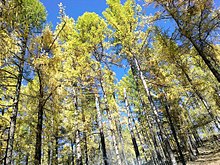
Forests with falling needles. Autumn larch forest in the Eastern Sayan mountains, Buryatia
Temperate and boreal forests
- Coniferous evergreen forests
- Falling needles
- Mixed coniferous-deciduous forests
- Broadleaved evergreen forests
- Broadleaf deciduous forests
- Freshwater swamp forests
- Hard-leaved dry forests
- Woodlands and park areas
- Plantations of native species
- Plantations without data clarification
- Forests without data refinement
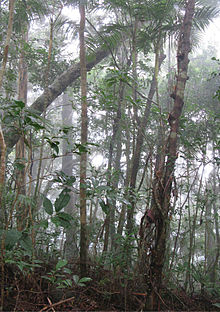
Lower mountain rainforest in the Philippines
- Plain evergreen broadleaf rain forests (up to 1200 m)
- Lower mountain forests (at an altitude of 1200 m to 1800 m)
- Upper mountain forests (above 1800 m)
- Freshwater swamp forests
- Semi-deciduous moist deciduous forests
- Mixed coniferous-deciduous forests
- Coniferous forests
- Mangroves
- Forests with noticeable human intervention
- Deciduous and semi-deciduous deciduous forests
- Hard-leaved dry forests
- Thorny forests
- Woodlands and park areas
- Plantations of exotic (that is, not growing in a given area in natural conditions) species
- Plantations of native species
Fauna of forests

I.I.Shishkin. Morning in a pine forest

European European bison in the oak forest of Oryol woodland
Forest fauna- animals using forests as a habitat, food source, breeding or protection site. The forest fauna accounts for up to half of all animal species. Its representatives may have specific adaptations to forest conditions. The forest provides its inhabitants with a number of ecological niches: forest soils, undergrowth, tree trunks, the upper layer of the forest. Many animals are highly specialized and tied to certain vertical layers and types of trees. The composition and number of forest fauna is determined by the structure and composition of the flora, and, in turn, animals have a direct impact on the growth, development and formation of the stand. The forest fauna of different zoogeographic zones differs significantly, while in tropical forests the fauna is the richest and most diverse.
The role of fauna in forest life
Distribution of animals in forests
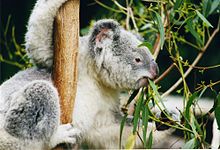
Koala (Phascolarctos cinereus), has a narrow food specialization - it feeds almost exclusively on shoots and leaves of certain types of eucalyptus
Some forest animals are a little choosy in their choice of forest, while others choose forests with a certain tree species (most insects feed on certain trees; many birds live exclusively, for example, in coniferous forests). In addition, some species prefer forest edges (most passerines, field harrier); others live somewhat deeper (small falcons, buzzards); still others climb into the very depths of the forest (many large birds of prey).
In terms of the number of species, tropical forests significantly exceed the forests of temperate and cold countries (the number of individuals of each individual species in them is small). The number of birds and insects is especially great in tropical forests. In humid tropical forests, due to a lack of light, the undergrowth and grass cover are poor, so there are few terrestrial species in them.
The number of animals in the forests does not remain constant. Reproduction and survival are greatly influenced by yields of high-calorie seed feed. Seasonal roaming and migration determine seasonal fluctuations in the number of animals in forests.
The meaning of the forest
Forest as a geographic and ecological factor

Winter forest. Pinezhie
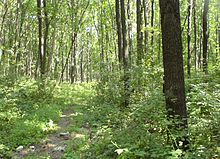
Spring forest. Slobozhanshchina

Dubrava in May. Belgorod region
Forests noticeably affect the processes occurring in the atmosphere, on the earth's surface and at a certain depth below it, interacts with many components of the environment, exerting a decisive influence on its quality:
- Hydrosphere... The forest is directly involved in the water cycle in nature and thus maintains water balance. The forest contributes to the accumulation of snow, retains soil, melt and rainwater, thereby improving the hydrological regime of water bodies, including underground. By slowing down the melting of snow in the spring, forests weaken the intensity of the often destructive spring floods, and maintain the high flow of rivers, which is important for hydropower.
- Soil... Forest litter, rich in other elements, is transformed into forest litter and humus. The podzolic process that forms acidic podzolic soils is most noticeable in the taiga; deciduous species and larch weaken it. The roots of trees allow water to penetrate into deeper layers of the soil, promote aeration, change their moisture capacity and permeability, and restrain soil salinization. For the preservation of soils from erosion, forests on high steep slopes and watersheds are especially important. Forests also help anchor sands. To prevent weathering of the fertile soil layer, as well as for snow retention, wind-shelter forest belts are created between the arable lands.
- Weather and climate... Forests soften seasonal temperature fluctuations and reduce wind speed and strength. The transpiration and relatively weak wind increase the air humidity in the forest by 5-10%. The destruction of forests over a large area makes the climate more continental and dry, and increases the likelihood of droughts.
The forest is a carbon storage
The forest participates in the oxygen cycle in nature in the most active way, having a decisive influence on chemical composition atmosphere. Despite the fact that in stable forests the amount of carbon monoxide (carbon dioxide) consumed in the process of photosynthesis, as a rule, does not exceed the amount released into the Earth's atmosphere as a result of respiration, combustion and decay, the forest plays a critical role in the geochemical carbon cycle. The forest is one of the main reservoirs of carbon on Earth. The Earth's atmosphere contains about 800 Gt of carbon in the form of carbon dioxide. Terrestrial plants, most of which are forests, contain about 550 Gt of carbon, which, if released into the atmosphere, will enhance the greenhouse effect and global warming. In addition, a large amount of carbon is accumulated in soils. Thanks to the existence of forests, reserves of coal and other minerals were accumulated in the past.
According to FAO, in 2010, forests stored more than 650 Gt of carbon, of which 44% in biomass, 45% in soil, the rest in dead wood and debris.
Economic value of the forest
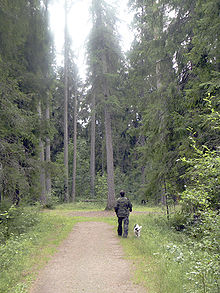
Mast forest (Lindulovskaya ship grove near St. Petersburg)

Virgin forest on the shores of Lake Arbersee
In the old days in Russia they said: “To live near the forest - not to be hungry. The forest is richer than the king. The forest not only feeds the wolf, but also feeds the peasant to his fill.
The following main directions of forest use for economic purposes can be distinguished:
- Food source (mushrooms, berries, game, honey).
- Energy source (firewood, and now raw materials for biofuel production).
- A source of raw materials (wood, resin, tar, bark, etc.) for the timber industry, including the woodworking, pulp and paper and wood chemical industries.
- Fodder base for animal husbandry.
- A favorable environment for the development of beekeeping.
The importance of forests for human health
The forest is of great sanitary and hygienic and medicinal value. In the air of natural forests, there are more than 300 names of various chemical compounds... Forests are actively transforming some atmospheric pollution. Conifers have the greatest oxidizing ability - pine, spruce, juniper, as well as some varieties of lindens and birches. The forest actively absorbs aerosol industrial pollution, in particular, it precipitates dust in the crowns, with its subsequent transfer to the soil along with precipitation, maintains the constancy of the air composition (1 ha of forest precipitates up to 50-70 tons of dust per year). Forest strips along roads help to reduce traffic noise.
Forests, especially coniferous ones, emit phytoncides - volatile substances with bactericidal properties. Pine forest releases about 5 kg of phytoncides into the air per day, juniper - about 30 kg. Phytoncides kill pathogenic microbes. In coniferous forests, the air is almost sterile.
Being in the forest has a beneficial effect on nervous system, tone, enhances motor and secretory functions of the gastrointestinal tract, improves metabolism, stimulates cardiac activity and enhances immunity. The forest is the most important recreational resource, ecotourism, walks in the forest, recreation in the forest help relieve stress and restore mental and emotional health of a person.
Forest as a historical factor
The presence or absence of a forest often had a direct impact on the course historical processes and the fate of ethnic groups.
Among some economists, it was suggested that the life of primitive man in the forests, where the gathering of forest gifts, performed mainly by women, as well as hunting and fishing, which were mainly done by men, became the basis for the division of labor, as one of the most important features of human society. The further development of tools and means of production, associated with the development of cattle breeding and agriculture, which meant significant progress in social relations, is associated with the release of man from strong dependence on the forest.
The founding of settlements on the site of forests, uprooted and thereby gave a place for life and agricultural activity, say, for example, the place names of German geography: Friedrichroda, Gernrode, Osterode, Rodach, Walsrode, Wernigerode, Zeulenroda and others. Some of these settlements are roughly located on the territory of the extensive Hercynian forest, roughly coinciding with the place of residence of the Germanic tribes Germundurs, Fermions and Markoman
On the other hand, the forest, its proximity to housing, significantly influenced the historically evolving way of life of people, in particular, on national architecture. So, log buildings were a typical type of housing for the Eastern Slavs. Even in the case when the first floor of the building was built of stone (brick), the second floor and higher floors were wooden. This was facilitated by the belief that life in a wooden building is healthier than in a stone one.
For the first time, the historical role of the forest is documented in the notes of Julius Caesar (about 100-44 BC) about the Gallic War - De bello gallico, who between 58 and 51 came into contact with the Germanic tribes inhabiting the forested lands on the right bank of the Rhine. Caesar explained his refusal to expand expansion to these lands by the fact that these forests are inhabited by unicorns and other mythical animals, and therefore these lands can never be colonized, and it is more expedient to simply ignore them.
Most likely, the reason was Caesar's clear understanding of the uselessness of using the tactics of the Roman legions in the forest, which brought a sure victory in open spaces. And this fear was confirmed in the year 9, when the Cherusque Arminius in the Teutoburg Forest utterly defeated the army of the Roman commander Publius Quintilius Varus. As a result, at the beginning of our era, the wooded area inhabited by the Germans even bore the name of "Free Germany" among the Romans ( Germania libera).
For the main part of humanity living in areas with a temperate climate, forests have long ceased to be a place of residence for large communities, but their function as a refuge from the enemy, as well as from excessive regulation by society, has been preserved throughout human history. The forest has always been associated with the habitat of marginalized individuals, which is reflected in fiction(Robin Hood from Sherwood Forest) or in the national Russian epic - "Nightingale the Robber" from the Murom Forest.
In the Russian state, the specially protected forests of the Zasechnaya line in the 15th-18th centuries carried an important function of protection from the raids of the Crimean Tatars. In these forests, continuous blockages of trees were arranged, difficult for the cavalry to pass.
During the Second World War, the Bryansk forests, the vast forests of Polesie on and in were called "Partisan Territory". Here, despite the occupation regime, the organs of Soviet power continued to exist. After the war in Lithuania, the forests also served as a refuge for nationalist groups calling themselves "forest brothers".
In the forested areas of occupied Yugoslavia, the partisan community even had the character of a state formation with its own armed forces differentiated by type of service.
After World War II, vast forested areas were also home to large partisan formations (Che Guevara).
The role of the rainforest in the Vietnam War is well known.
The destruction of forests has not become one of the reasons for the disappearance of the unique civilization of the ancient Rapanui, deforestation, which caused soil erosion, led, along with other factors, to the decline of the Mayan civilization.
History of forests
The oldest history
The very first land plants are found in Australia. Their age is approximately 395 million years. About 370 million years ago (the beginning of the Devonian period), vegetation from low shrub forms was widely spread on land.
The first forests were low-growing forests of giant horsetails and lymphoids, which had a height of more than 7.5 m, with an undergrowth of primitive ferns and other small plants.
About 345 million years ago, the Carboniferous period began, during which dense, extensive forests of giant horsetails, lymphoids and tree ferns, which had a height of about 30 m, spread on land.At the same time, the first primitive gymnosperms appeared - seed ferns and cordaites. Coal formed during this period often contains numerous plant fossils.
At the beginning of the Permian period (280 million years ago), the processes of mountain building, powerful glaciation of the Southern Hemisphere and the global redistribution of land and sea took place, the climate became increasingly dry. At this time, primitive cycads and conifers spread, displacing giant horsetails, moss and tree ferns.
The era of the dinosaurs
About 225 million years ago, the era of dinosaurs began - Mesozoic era... In the Triassic and Jurassic periods, the main stand was formed by cycads and conifers (a lot of sequoias), a large number of ginkgo species were spread. In eastern China, ginkgo biloba still grows, the only representative of the gingkov class that has survived to this day. The most common were coniferous forests of trees similar to modern araucaria.
In the Triassic period, the first angiosperms (flowering) plants appeared. During the Jurassic period, the variety of flowering plants gradually increased, and conifers and other gymnosperms became less and less. Flowering plants began to dominate the stand during the Cretaceous period (135-65 million years ago), among them were the ancestors of modern ficuses, magnolias, hollies, oaks, sassafras, willows and maples. Metasequoia - a tree with falling needles - spread throughout the Northern Hemisphere during the Cretaceous and Paleogene periods.
Recent time
At the beginning of the Paleogene, during the Paleocene, the climate continued to be warm and humid, which contributed to the diversity of flora and an abundance of vegetation, including angiosperms. The forests of the Northern Hemisphere were similar to modern tropical and temperate forests.
- Arctotretic the type of flora was the most northern that existed at that time. Deciduous trees and other plants of this type were very similar to modern plants of eastern North America and Asia, were very similar throughout this distribution area. The dominant broadleaf species were elm, chestnut, maple, with alder and metasequoia playing an important role.
- Tertiary neotropical the type of flora was distributed closer to the equator, it was distinguished by evergreen broadleaf species, related to modern tropical and subtropical species. In the Neogene period, due to changes in climatic conditions, the types of flora moved towards the equator. Forest areas were shrinking, giving way to grass communities.
- Madrothretic a type of flora formed in western North America as the dry climate spread, and is characterized by small-leaved trees and shrubs, similar to modern Mexican and southwestern United States.
At the end of the Cenozoic period, mountain building and climate change took place in western North America. Thanks to this, conifers, previously unnoticeable in the Arctic Tertiary flora, began to dominate.
The Quaternary period, which ended the Cenozoic era, began about 1.8 million years ago and continues today. Its features: alternation of epochs of extensive continental glaciations (glacials) and warm interglacial epochs (interglacials). Because of this, many species of trees and other plants died out, and the area of forests decreased noticeably and everywhere.
In the era of human civilization
Over the past 8000 years, man has completely destroyed about 50% of the forest areas that existed on the planet, these territories are occupied by crops, pastures, settlements, wastelands and other anthropogenic landscapes, of the remaining forests, only 22% consist of natural ecosystems. Moreover, more than 75% of deforestation occurs in the 20th century - the period of the global population explosion.
Exploring the forest
The science that studies forests is called forestry... Forestry studies forests as a complex plant community, including:
- all organisms inhabiting the forest and their relationship with the environment,
- biological features and silvicultural properties of forest species and plantations,
- patterns of species change during the maturation and aging of the forest,
- zonal forest types and corresponding types of forest growing conditions.
As a theoretical basis for forestry, forestry studies systems of organization and methods of forestry.
The science that studies woody plants (trees, shrubs and shrubs) is called dendrology.
To ensure sustainable forest management, UN FAO has identified the following main areas of its study:
- Distribution of forest resources,
- Biological diversity,
- The health and vitality of the forest,
- Protective functions of forest resources,
- Productive functions of forest resources,
- Socio-economic functions of forest resources,
- Legal, political and organizational aspects.
Forest protection
Unfortunately, today the volume of deforestation is often several times higher than the volume of its natural restoration. In this regard, in civilized countries, much attention is paid to the reproduction of forests, both by planting forests and by completely banning any economic activity in some forests. Thanks to this, natural forest reproduction is ensured in these areas, and in some countries there are few forest areas where human intervention in the life of the forest has never taken place. Forest protection is one of the activities for environmental protection and nature conservation and is carried out:
- at the level of international law, for example, the Convention adopted by the UN Conference on environment and Development, Rio de Janeiro, 3-14 June 1992.
- at the state level.
- at the level of public organizations, up to radical methods of tree spiking.
Activities related to forest protection can be divided into the following groups:
- research.
- organizational and technical.
- creation of reserves and other protected areas.
- reforestation.
- economic.
- administrative and legal.
see also
- Energy forest
- Drunken forest
- Logging
- Deforestation
Part 3
Naturalist with experience
Overcoming difficulties gives a person deep satisfaction. A similar feeling is experienced by a climber who, at the cost of tremendous efforts, reached the goal and climbed to the top. This quality - to set a goal and go to it through all obstacles - sets a person apart from the rest of the animal world. This quality - a fusion of intelligence, decisiveness and perseverance - determines the superiority of man over other mammals, makes him stronger than a grizzly, tiger, elephant.
The assimilation of the second half of the book will require a lot of effort from you, because the time has come to set goals for yourself and, having mobilized your forces, to realize these goals. One of the challenges - and most importantly - is to acquire a solid foundation of knowledge. You can set other goals for yourself, but achieving the first is a big and difficult task. You have already started it.
The process of cognition, such as the naturalist sees it, is endless. The reward for your pursuit of the unattainable will be that your life will become interesting for years to come. CHAPTER 20
Ecosystems can be small and large, but in both cases they are complete ecological units of the connection of animals and plants with their habitat, soil, breed, water and atmosphere. The study of ecosystems or biomes - as large ecosystems are called - is a necessary part of the education of a naturalist. Such a study will allow you to imagine the general picture of life in a fairly large area or region, as well as see how each of its factors affects others.
In this chapter, we'll look at just three ecosystems: the deciduous forest biome of the eastern and some central western states, the Rocky Mountain and Sierra Nevada coniferous forest biome, and water life, which we'll take a closer look at as a pond can be found anywhere. Two other similar ecosystems are the rocky shores of the Atlantic and Pacific oceans- described in detail in chapter 17.
The temperate deciduous forest biome is the most comprehensive and diverse biome in North America. At the same time, it is he, as well as the temperate steppe biome, which includes the Great Plains and Prairies of North America, has undergone significant changes due to human intervention. The biome of the deciduous forest, which includes different types of forests, is very diverse and complex.
These forest communities can be very different from one another, because deciduous forests are much more dependent on climatic conditions than coniferous ones. The amount of precipitation in the zone occupied by deciduous forest ranges from 70 to 150 cm per year, with the minimum amount falling in the north and west, and the maximum amount in the east and south, especially in the Gulf of Mexico region. Since rainfall occurs throughout the year with short interruptions, these forests are practically not afraid of drought and fires.
Deciduous forests are rich in life. Trees dampen the wind, which is very important for birds and insects. The dense foliage also protects them on a hot sunny day, reducing the illumination by up to 10% in thick foliage and up to 1% at ground level.
How difficult life in a deciduous forest is, is especially clearly seen in the example of longline communities.
1 - forest canopy, 2 - undergrowth, 3 - shrub layer, 4 - grass layer, 5 - underlying and soil layer
Modern deciduous biome forests are no longer as tall as they were in early XIX centuries; however, even now there are trees 23-34 m high with trunks 60-95 cm in diameter. The upper layer of the forest includes the tops of the trunks, the bark of the branches and the upper flakes. There are at least 1,500 invertebrates per 1 m 2 of this area - an excellent food for birds. Red-headed and downy-finned woodpeckers, Caroline nuthatch, crested tit and tawny owl hide and nest in numerous cavities of the main trunk and upper branches of the tree. Small mammals also live there - flying squirrels, gray squirrels and striped raccoons. Some birds nest and feed here - vireoia, warblers and tanagra. Competition in this tier must be fierce.
Below, in a tier of tall shrubs, red-eyed vireons and olive tyrants live. The layer of the middle shrub is occupied by pisimines, and the low layer (1-2 m) is mainly occupied by Calicant Florida and also by young growth of large trees. There and then the lace bugs crawl and the big American blackbirds fly. In the layer of tall grasses (15-100 cm), the water lover, the stinging nettle, the three-leaved derris and the dominant undergrowth are winding; and from insects mosquitoes and mud bugs are usually found here. And, finally, the lowest tier - low grass (0-15 cm) - is the habitat of violets and round-leaved ungulates, predatory snails, larvae of flying insects and millipedes. Fallen trees and stumps can also be considered part of this tier. Their surface is covered with mushrooms; flat beetles and springtails are found under the bark. Spiders are found in all tiers, and their relationship with various plants and insects is a separate issue that requires special study. Below, among the roots and in the soil, mole-shaped gophers, feeding on plants, and moles, feeding on worm-shaped larvae and worms, live in burrows. And on the ground crawling millipedes (two-legged), millipedes and wood lice.
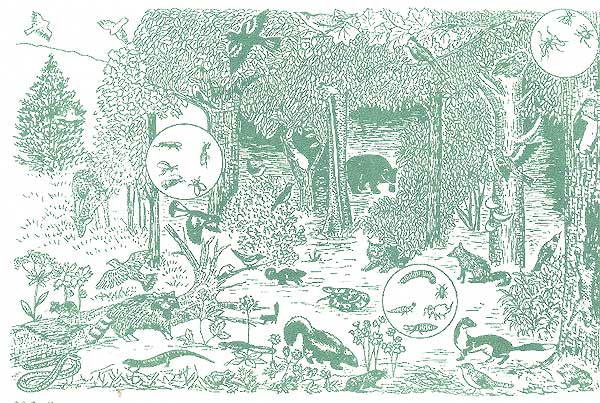 The rich and varied life of this biome, its fertile soil attracted people here. Hunters and settlers mercilessly destroyed trees over large areas, and only a small percentage of the forest areas have remained untouched to this day.
The rich and varied life of this biome, its fertile soil attracted people here. Hunters and settlers mercilessly destroyed trees over large areas, and only a small percentage of the forest areas have remained untouched to this day.
Among the dominant tree species of the climax community in this biome, one can name: velvet oak, white oak, small oak, oval hickory and heart-shaped hickory. Further to the north, red oak dominates. In the southern states, there is also a lot of red and laurel oak, as well as white hickory, dull holly and red Perseus. Mountain oak, black walnut and large-leaved beech are widespread, but not dominant. Willows and poplars grow along the river banks. Bird cherry and hawthorn grow on the site of forest fires. In other places, there are communities of white elm, rusty elm, red maple, yellow poplar, large-fruited oak, marsh chestnut oak, hemlock (in the north) and mountain ash. Numerous climbing plants, shrubs, and small undergrowth trees complement these complex communities inhabited different kinds mammals, birds, reptiles, amphibians and invertebrates.
This biome extends to the mountainous west of North America, with the exception of the Pacific rainy coast biome and foggy coniferous forests near the Pacific coast. The main area of the biome of the mountain coniferous forest is the Sierra Nevada. And since it is close to densely populated areas, we will take a closer look at this site.
 The forests of the Sierra Nevada are divided into four main types - depending on the height at which they grow, since the amount of precipitation and air temperature are related to height. The low temperatures of the highlands are the main limiting factor that inhibits the spread of a number of tree, plant and animal species there, although some of them rise above their normal range in summer and autumn.
The forests of the Sierra Nevada are divided into four main types - depending on the height at which they grow, since the amount of precipitation and air temperature are related to height. The low temperatures of the highlands are the main limiting factor that inhibits the spread of a number of tree, plant and animal species there, although some of them rise above their normal range in summer and autumn.
Below, in the so-called zone of the Upper Sonora, pine-oak massifs appear. This area is dry and open, the amount annual precipitation is 50 cm; it is the boundary of the mountain forest biome rather than part of it. Dominant vegetation: large-fruited and virgin oak, white Californian pine and various chaparrel shrubs - bearberry and wild lilac. It is inhabited by perognaths (a family of bagulokans) and bristly mice, Californian ground squirrels, gray squirrels, crepuscular tree rats-neotomes and black-tailed Californian hares; they are hunted by the American marten, red lynx, coyote and gray fox. In winter, a black-tailed donkey deer that has descended here is attacked by a cougar, a coyote and a bear. On the banks of the rivers, neotoma live in large nests made of twigs. And besides the owners, in each such nest there are many ants, beetles, larvae, etc. Birds in this part of the biome are found in the California jay, brown taui, mountain partridge, hairy woodpecker, white-browed wren, vireons (on the tops of trees), red bunting, little eared owl, eagle owl and hawk
The main massif of mountain coniferous forest is divided into two main zones - depending on the height at which the forest grows, and, consequently, on how much snow falls there in winter and how sharp the temperature fluctuations. At low altitudes, where there is less snow and the temperature does not drop too low, there are forests of yellow pine, or the lower mountain forest, which smells sweetly of pine bark. There is also a lot of monochromatic fir, incense cedar and Lambert pine, and a little higher are giant sequoias - the most big trees on the ground. Among the bushes, mainly wild lilacs, bearberries and gooseberries grow; in this forest there are significantly fewer tiers than in deciduous ones. Chipmunk squirrels and flying squirrels live on the tops of the trees, which are hunted by the American marten. The land is home to shrews, long-eared chipmunks, white-footed hamsters and fluffy-tailed neotomas. Among the birds, the most common are striped pigeon, perching owl, blue-headed vireo, warbler, purple lentil and common, wren. Reptiles include beautiful red, black and yellow striped California snakes and woody salamanders living on velvet oaks. Of the insects, it should be noted the huge brown beetles with long antennae - these are the deadly enemies of the pine.
The upper mountain, or red-fir, forest is almost entirely composed of magnificent red fir. These pyramidal trees are growing so densely that they have destroyed all the undergrowth. They have perfectly adapted to a large number snow (often up to 6 m depth), which supplies them with moisture for the whole year. In winter, because of the cold, almost all birds fly out of this forest, but some mammals lead an active lifestyle even in the most severe cold.
Hare-hare overwinter here, as well as chipmunks, squirrels, flying squirrels, ground squirrels, which store nuts and seeds for the winter in tree hollows; break through under the snow the moves of the mouse. They are hunted by martens, red fox and mountain coyote.
In the lower belt of the subalpine forest, a broad-coniferous pine with curved, twisted trunks grows. Above are Mertens' hemlock and Weymouth pine. In the uppermost belt of the subalpine forest, a rough white-stemmed pine tree grows, often on one side it has dead trunks - because of the fierce winds blowing at these heights. Stunted shoots of white-trunk pine grow on the border of high-mountain alpine meadows. This pine is known for the fact that its annual rings can be used to study the history of the climate of North America. Some of them are 3,000 years old, and a few are 5,000 years old. But even to these harsh places the black-tailed donkey deer reaches in summer in search of lush alpine grass, bushes and other vegetation, and occasionally an unsurpassed fisherman appears - a huge pecan, protected by thick wool from the cold. A fluffy-tailed neotome, a yellow-haired arboreal porcupine and a golden earth squirrel, pursued by a coyote and a marten, also rise here, but here these hunters themselves fall into the paws of a pecan. Amusing pikas, or haystacks, which are found in mountain meadows surrounded by coniferous trees, hide for the winter stocks of hay in cracks of rocks or small caves; their warning shrill whistle echoes far around. Preparing food for the winter, the yellow-haired marmot competes with them, digging deep burrows under large boulders, where it hides from the coyote and the bear. The marmot also emits a warning whistle - only its whistle is longer and lower in tone. It is also home to a hermit who emits loud, disorderly trills, a large schur and a charming mountain finch with a gray crest. There are almost no insects here, because night frosts occur even in summer. 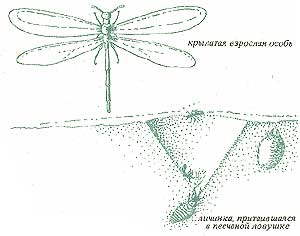
In such mountainous locations, a naturalist must conduct many experiments to try to understand how different creatures and plants adapt to each other, as well as to the harsh cold and snow in winter. As you climb the slope, one after another, pictures of a varied life open up in front of you, each of which is a part of a great whole, adding something of its own to it. I once spent several weeks in these forests studying black and red ants and their reactions to predators - birds and lizards. The most interesting thing was to observe how ant lion larvae tore off conical pits in the sand and hid in them, waiting for an ant or other insect to fall into a trap and immediately find itself in their sickle-shaped sharp jaws. Every day brought new impressions.
In all of North America, with the exception of the ocean coasts, there is no ecosystem or biome where life is as complex and rich as in a large pond. The banks of such a pond may be overgrown, but it must necessarily have a large area of open water. You can choose a pond with clean water and shallow enough for plants to grow throughout its depth. Let's stop, for example, on a body of water no more than 5 m deep. Most likely, we will not need to make long journeys to find such a pond. And the life and relationships of organisms living in water are of interest to naturalists.
A pond is called young if it has been recently dug and contains only clean silt and stones; medium - if dense vegetation has grown along the banks; old - if the surface of the water is overgrown, and dead - if the mass of plants drowned out the water and the pond dries up. Now we will consider a middle-aged pond, about 50 m wide and 5 m deep in the center. A pond is a body of stagnant water, as opposed to a stream or river where the water is running. But in spring, water from small streams flows into this pond, enriching it with oxygen and thereby saving it from decay.
We will only cover an initial picture of the complex life in a body of water, but it will help you get an idea of many other bodies of water. The life of the pond depends on the soil, land plants and the animals surrounding it. If the soil is acidic, as is the case in conventional broadleaf forests, then the water environment in a pond surrounded by such trees will also be acidic. The level of acidity and alkalinity of soil and water is measured by the pH value, taking a pH equal to 7 (pH = 7) as a neutral value; then a pH above 7 means an alkaline environment, and a pH below 7 is acidic. Life in a pond can exist only at certain pH values: not lower than 4.7 and not higher than 8.5 - only under these conditions can bacteria and fungi actively decompose organic matter (dead animals and plants), turning it into humus. If the soil pH is high, snails and worms usually live on it, but if the pH is below 5, they disappear, and their place is taken by arthropods - mites and springtails. Changes in pH levels also affect pond life, as many animals and plants can only live within narrow pH ranges. If the pond is surrounded by chestnut forest soils, then these are slightly acidic soils - their pH = 6-7; the soils of the coniferous forest are even more acidic (pH below 3), and chernozem, which is most often found in meadows, has a pH of 7-8, which indicates a slight alkalinity of the environment. The composition of the surrounding soils affects the properties of the water in the pond, and therefore the lives of the inhabitants of this pond.
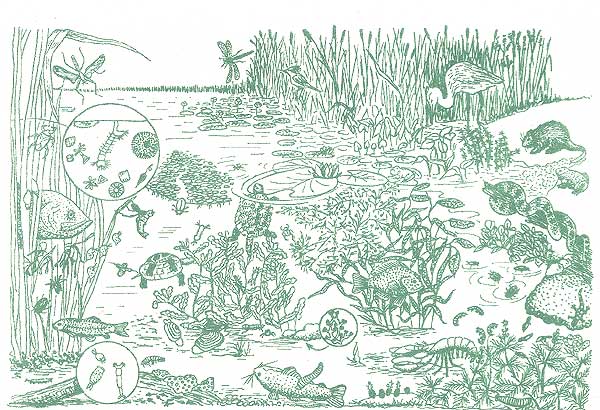 The life of the pond is also influenced by animals that enter it from land. A mink diving in search of fish and muskrat terrifies its inhabitants; ducks eating aquatic plants lift mud from the bottom; people also do their bit by hunting and fishing. As you explore the pond, find other external influences.
The life of the pond is also influenced by animals that enter it from land. A mink diving in search of fish and muskrat terrifies its inhabitants; ducks eating aquatic plants lift mud from the bottom; people also do their bit by hunting and fishing. As you explore the pond, find other external influences.
But what happens directly in the pond itself? If you approach the pond noisily, it will seem calm to you - all its inhabitants are hiding. If you approach the water carefully and quietly, you can hear various sounds: the bubbling of gas bubbles rising from the muddy bottom, the calling calls of frogs and toads, the clear song of a yellow warbler from thickets of willows, or a magnificent song of a long-tailed wheatear from the branches of a poplar. You will hear deafening splashes at the far end of the pond - there are frogs jumping into the water, fleeing from a raccoon, and a lone splash in the middle belongs to a large-mouthed black perch. If you stay by the water longer, you will feel your involvement in the countless conflicts and events taking place in the pond. Every cubic centimeter of pure water is filled with a myriad of invisible but highly active microscopic lives; they are just waiting for you to get a microscope to study them.
The vegetation that spreads 5-7 m from the shore of the pond is a dense jungle where many different creatures can hide, hunt and feed. Magnifiers and microscopes and a glass-walled box will help you explore this life.
For practical purposes, we will divide our pond into sectors in which different creatures live. Some of them are found in several sectors. First of all, we will consider three vegetation zones of stagnant water near the coast. The first zone is the world of aquatic plants growing at the very shore in stagnant water; their roots are under water, and the main part of the stem, leaves and flowers hover above the water. Cattail is a good example of such a plant. The second zone - the water depth of 0.5-1 m - is occupied by floating plants, in which the bulk of the stem is under water and only a small part of it protrudes above the surface, and most of the flowers and leaves float on the water. An example of such plants is the water yarrow and water lily. The third zone is dominated by submerged plants such as scum and pond algae; their leaves are mostly submerged in water, and only a few of them float on the surface. Here the water depth is already 1 - 3 m or more. At such a depth, the bulk of the leaves is almost devoid of sunlight, and the water deeper than two meters is dark and cloudy; many shadows move in this mysterious jungle. Above these three plant zones lies the fourth - a film of surface tension of water, a very thin, elastic and rather sticky layer on which water striders slide, and pond snails move under water, sticking down with a shell. And, finally, there are two more zones: the fifth is open water, where large fish swim, and the sixth is a dark muddy bottom, where life hidden from our eyes boils.
Among the plants of the first zone - cattails and plantain daisies - there are many creatures that are equally connected with land and water. Tree frogs climb among the arrowhead - due to their green color, they completely merge with the arrowhead. Here, on the surface of the water or among the plants, an already appears, sowing panic among the frogs. He has only to raise his head - and the frogs, having made a desperate jump to land, hide in the thickets, using their advantage: to escape on the shore from enemies trapping them in the water, and vice versa - at the slightest danger on the ground, rush into the water. Already curled up in dark rings under water and with two sharp movements scares a couple of some creatures lurking behind the stems. Below in the stalks of the cattail, the narrow cattail moth lays its eggs, and soon a whole population of small gray caterpillars will live safely in the stems until it is time to turn from pupae to moth and leave the stems that have sheltered them.
In the second zone, where yellow water lilies have scattered their huge leaves on the surface of the water, a huge bullfrog surveys its kingdom, sitting on a large leaf. This is a veteran frog that has been close to death hundreds of times. Each such lesson teaches her even more discretion, because out of a thousand tadpoles that hatched from eggs laid by a mother frog fifteen years ago, only one survives. Now this frog is so big that it has almost no enemies. She sits very quietly, merging with a green leaf, waiting for prey. From time to time, the frog quickly throws out its long tongue in order to grab a flying fly or an insect caught on a leaf, but such an insignificant prey cannot satisfy the hunter's appetites. The giant frog, about half a meter long, is always hungry. Therefore, as soon as a meter-long snake appears on the surface of the water, the frog makes a lightning jump and grabs the snake's head with its huge mouth. Already, resisting, furiously whipping its tail through the water; the water boils around, but the bullfrog quickly breaks the opponent's neck and begins to push the snake's body into the esophagus with the help of its strong pharyngeal muscles. Soon it disappears into her mouth. The frog swims back and again quietly sits down on the floating water lily leaf, comparatively satisfied.
Deeper, under water, there is a life-and-death struggle. A dragonfly nymph crawls along the muddy bottom, ugly and furious, for which she received the nickname "water tiger". From time to time, it disappears from view, burrowing deep into the silt. Finally, the nymph finds a secluded spot among the stems of a water lily and lies there completely still, an ugly head with huge dark eyes staring into the distance - a real devil. The rectal gills allow her to breathe underwater, unlike the dragonfly parents who breathe air. Suddenly she notices a small hazel fish, about 8 cm long, rapidly pursuing a mayfly larva. The nymph throws out its "articulated" lower jaw with two sharp claws and digs into the filbert. The fish makes desperate efforts to free itself, but blood flows from its body, and gradually it calms down. And at this time, a giant water beetle-beetle, a good 7 cm long, sinks from the surface to the bottom; the beetle pounces on the nymph and, seizing her with its two-centimeter claws, plunges a dagger-like proboscis into her body. Despite the desperate efforts of the nymph to break free and bury itself in the silt with the help of its jet stream, the beetle sucks all the blood out of it ...
 In the third zone, among the leaves of the submerged plant, dragonflies, male and female, joining in a pair, lay eggs. From time to time, the female plunges her tail deep into the water, supporting the eggs so that they can calmly sink into the silt. In this area, where there is a lot of aquatic yarrow and steep, the life of small creatures is in greater danger than near the coast, since underwater plants are the main hunting ground for large fish. Water spider - spotted pizaura courageously slides over the film of surface tension of water. His running is so easy that it resembles a dance, and his speed allows him to avoid encounters with dangerous enemies. Diving in depth, it is covered with a silver shiny shell of air bubbles that allow it to remain under water for several minutes. He swims up to the narrow leaves of the pemphigus, avoiding, thanks to the experience of past dives, the small underwater bubbles attached to the leaves, because they can catch him. Having reached the stem, the spotted pizaura freezes, turning into a silvery part of the plant, but when he sees a small fishtooth, it rushes at it like a torpedo and grabs it with sharp jaws. The jaws of pisaurids secrete a poison that paralyzes the victim. As soon as the fishtooth subsides, the spider begins to drink its blood. Having finished with the prey, the pizaura hurries upward until the air in the bubbles runs out. To make it easier to break through the surface film, it crawls out from under the water along the stem of the plant, then rises even higher along it so that enemies that live in the water cannot reach it. Like frogs, pisaurids belong to two worlds.
In the third zone, among the leaves of the submerged plant, dragonflies, male and female, joining in a pair, lay eggs. From time to time, the female plunges her tail deep into the water, supporting the eggs so that they can calmly sink into the silt. In this area, where there is a lot of aquatic yarrow and steep, the life of small creatures is in greater danger than near the coast, since underwater plants are the main hunting ground for large fish. Water spider - spotted pizaura courageously slides over the film of surface tension of water. His running is so easy that it resembles a dance, and his speed allows him to avoid encounters with dangerous enemies. Diving in depth, it is covered with a silver shiny shell of air bubbles that allow it to remain under water for several minutes. He swims up to the narrow leaves of the pemphigus, avoiding, thanks to the experience of past dives, the small underwater bubbles attached to the leaves, because they can catch him. Having reached the stem, the spotted pizaura freezes, turning into a silvery part of the plant, but when he sees a small fishtooth, it rushes at it like a torpedo and grabs it with sharp jaws. The jaws of pisaurids secrete a poison that paralyzes the victim. As soon as the fishtooth subsides, the spider begins to drink its blood. Having finished with the prey, the pizaura hurries upward until the air in the bubbles runs out. To make it easier to break through the surface film, it crawls out from under the water along the stem of the plant, then rises even higher along it so that enemies that live in the water cannot reach it. Like frogs, pisaurids belong to two worlds.
Down at the bottom, deep in the silt, a large caiman turtle is clumsily moving. Protected by a rough horny shell, armed with strong jaws and a horny beak that can bite through a human leg almost to the bone, this turtle is the queen of the depths. She is afraid only of the spear or the hunter's harpoon. Making its way through the stalks of algae, she chews them, pushing them into her mouth, and buries herself in the silt in anticipation of more solid food. Only the head and bead-like eyes stick out of the silt. Here she notices the larva of an equal-winged dragonfly that has appeared nearby, makes a successful attack and again calms down. Another large predator descends from the surface of the pond - an almost half-meter black largemouth perch. It swims close to the turtle, but, having noticed it in time, keeps its distance from strong jaws.
The smaller fish, the common Chukuchan, acts as a vacuum cleaner, burrowing into the silt in search of worms and larvae hidden there. The cayman turtle patiently waits until the Chukuchan is close enough - and immediately throws out its head like an attacking snake. The water instantly becomes cloudy from silt, as the Chukuchan fights desperately, trying to free themselves from the death grip of their jaws, but he fails.
Unlike the Chukuchan and the catfish, which lazily move along the bottom in search of food, perch, karpozubik, hazel and sunfish - the inhabitants of the fifth zone, the open water zone - catch insects right in the water or on its surface, and large fish hunt for smaller ones. Perch, swimming at the very surface of the water, protrudes from it from time to time to grab a fly or a beetle, helplessly adhered to the surface film. However, when he tries to catch the native inhabitant of the fourth zone - the zone of the surface tension film - sliding along the surface, like a skater, a water strider, it turns out to be much more difficult. As soon as the perch sticks out its head, the water strider makes a sliding dash and escapes from the fish. And then the water strider, being in her element, seeing a mayfly adhering to the film, rushes to it, grabs it with its front paws and plunges its proboscis into its body.
But a small sunfish jumps out of the water to grab a bee buzzing on the surface. She is so carried away that she does not notice how something blue and white is falling from the sky to the surface of the water like a bullet. This kingfisher crashes into the water and grabs a sunfish with its beak. She's a little too big for him. A fight ensues, during which the fish even manages to half-drag the bird under the water, but in the end, flapping its wings violently, the kingfisher rises from the water and carries the beating fish to a high stump on the shore. Here, with a sharp blow, he breaks her spine and begins to tear to pieces. The dweller in the air, able to fight in the water, deserves his food!
The sixth zone is the dark world of the muddy bottom of the reservoir - the place where myriads of creatures hide and hunt. Here is a predatory small-bristled worm from the genus of bristle-bellies, even more ugly than a dragonfly nymph. Armed with jaws as sharp as needles, it moves through the silt in search of any food. Copepods, leeches, annelids, amphipods, even a flatworm, the same predator as a small-bristled worm - all flee when they sense its approach. Writhing ominously, he approaches the snail and removes it from its shell, not noticing two leeches lurking right there in the silt. But when this ferocious enemy disappears, leeches come to the surface and begin to climb the stem of the plant in search of some mammal, such as a muskrat or a human, to drink blood. Below, in a silty slurry, worms await their prey. The life of the reservoir presents a vivid picture of the struggle for existence; each seeks to eat the other without being eaten by himself. But here, too, there are quiet periods in the life of every creature and periods of acute excitement when the time for mating comes. In the midst of spring, at night, and sometimes during the day, near the reservoir there is a deafening roar of bull frogs, the annoying croaking of spring tree frogs, tree frogs; each species emits only its inherent sound signals, calling for a pair or actively mating, at a very specific time. Many insects, such as dragonflies, mate several times during the summer. Mayflies are circling in a night dance over the water; laying eggs on the stems of plants, they die, becoming a tasty prey for fish and other carnivores.
All living things show exceptional ingenuity in the struggle for existence. Giant belostoma water beetles and other aquatic insects store air under their wings, where it is held in by millions of microscopic hairs. Mosquito larvae have special tubes through which they, approaching the surface, draw air through the surface film. Some insects have special needles or proboscis, with the help of which they get to the air stored in the stems of underwater plants. Caddis larvae amaze with an amazing variety of protective covers made of grains of sand, pieces of bark, leaves, twigs, etc., glued together with saliva. Some of them are very beautiful. Find several of these creatures and study their way of life.
